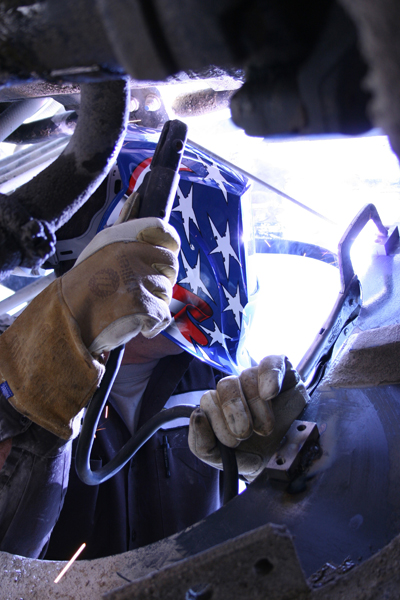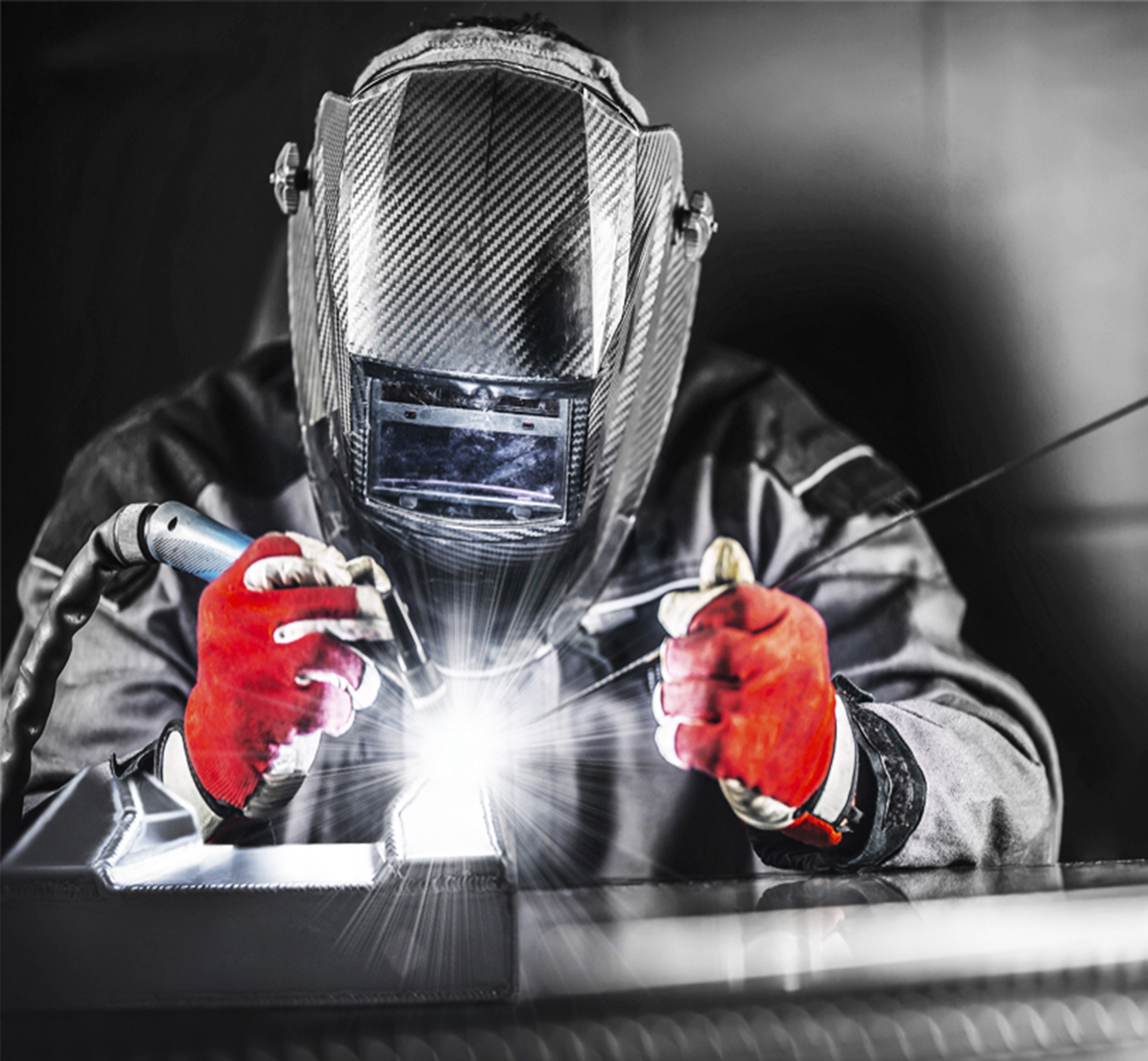Belgrade Fabrication’s proven methods for dealing with incomplete fusion
Everything about Welding: Key Insights Into Techniques and Ideal Practices for Success
Welding incorporates a variety of techniques, each fit for specific materials and applications. Comprehending these approaches, such as GMAW, SMAW, and TIG, is important for achieving ideal results. The appropriate equipment and safety methods can not be forgotten. As preparation and fixing play crucial roles in the welding process, grasping these aspects can significantly improve the quality of the last item. What are the crucial factors that guarantee a successful weld?
Recognizing Various Welding Techniques
Welding techniques include a range of approaches, each suited to certain applications and products. Amongst the most common methods are Gas Steel Arc Welding (GMAW), Secured Steel Arc Welding (SMAW), and Tungsten Inert Gas Welding (TIG) GMAW, additionally understood as MIG welding, is popular for its speed and adaptability, making it perfect for thin products. SMAW, or stick welding, is preferred for its simplicity and performance in outside atmospheres, especially with thicker metals. TIG welding offers accuracy and control, making it appropriate for detailed work and non-ferrous metals (Welding). Each strategy has its unique advantages and considerations, enabling welders to select the very best technique based on the job's needs, material type, and desired end results. Recognizing these strategies is necessary for effective welding
Essential Welding Devices and Devices
While numerous welding methods require certain abilities, the appropriate tools and tools are just as vital for achieving top quality outcomes. Necessary welding devices includes welding makers, which vary relying on the technique-- such as MIG, TIG, or stick welding. Protective equipment, including headgears, gloves, and aprons, assurances safety and convenience throughout the procedure. Additionally, clamps and fixtures assist secure products in place, guaranteeing precision in welds. Consumables like welding rods, wire, and shielding gas are likewise vital parts that influence the high quality of the weld. Moreover, devices such as mills and cutters assist in surface preparation and post-weld ending up, adding to an expert outcome. Investing in high-quality devices ultimately improves the efficiency and efficiency of welding jobs.
Safety And Security Practices in Welding
Correct security techniques are crucial in the welding market to secure workers from possible dangers. Welders must put on suitable personal protective equipment (PPE), including headgears with correct shading, gloves, and flame-resistant garments. Sufficient ventilation is vital to decrease direct exposure to harmful fumes and gases generated throughout the welding procedure. In addition, workers should be educated in the right handling of welding tools to avoid crashes. Fire precaution, such as maintaining flammable products far from the welding location and having fire extinguishers conveniently offered, are needed. Normal inspections of devices and workspaces can help recognize potential threats before they cause accidents. By sticking to these safety and security practices, welders can develop a much safer working atmosphere and minimize dangers related to their trade.
Preparing Materials for Welding
Preparing products for welding is an important step that greatly affects the top quality and honesty of the end product (Welding). Appropriate preparation includes cleaning up the surfaces to get rid of pollutants such as rust, dirt, and oil, which can endanger the weld. Techniques such as grinding, sanding, or utilizing solvents are generally employed to accomplish a tidy surface area. Furthermore, guaranteeing that the materials mesh comfortably is necessary; voids can bring about weak welds. It's also essential to take into consideration the positioning and positioning of the elements, as this will certainly impact the ease of welding and the final end result. Lastly, selecting the proper filler product and guaranteeing compatibility with the base metals is essential for accomplishing strong, sturdy welds
Tips for Getting High-Quality Welds
Attaining high-quality welds needs interest to detail and adherence to ideal techniques throughout the welding process. Appropriate joint prep work is essential, ensuring surface areas are cost-free and tidy from contaminants. Picking the ideal filler product and welding strategy based on the base steels is vital for suitable bonding. Maintaining constant traveling speed and angle while welding can advertise and stop problems uniformity. In addition, managing heat input is important; excessive heat can cause warping and weakened joints. Frequently inspecting the welds throughout the procedure enables prompt modifications if essential. Lastly, utilizing appropriate post-weld treatments, such as cleaning and stress and anxiety alleviation, can boost the longevity and stability of the weld, eventually making sure an effective end result.
Fixing Typical Welding Issues
Welding typically presents challenges that can influence the quality and stability of the end product. Usual problems such as porosity, irregular weld beads, and getting too hot can develop, each needing specific troubleshooting techniques. Comprehending these issues is crucial for welders to enhance their skills and accomplish excellent outcomes.
Porosity Troubles Clarified
Although porosity can often be ignored, it remains a critical concern in welding that can jeopardize the integrity of a finished item. Porosity describes the visibility of small gas pockets within the weld grain, which can lead and deteriorate the joint to premature failing. This issue commonly develops from pollutants, dampness, or inappropriate protecting gas protection throughout the welding procedure. To reduce porosity, welders ought to validate that the base products are clean and completely dry, make use of ideal protecting gases, and maintain consistent welding criteria. On a regular basis checking the devices and atmosphere can also aid recognize prospective issues prior to they manifest in the weld. Addressing porosity successfully is important for attaining solid, resilient welds that fulfill high quality standards.

Irregular Weld Beans
Irregular weld beads can greatly affect the high quality and stamina of a completed item. Numerous factors add to this concern, consisting of incorrect travel rate, inaccurate amperage settings, and inconsistent electrode angles. When the welder relocates as well swiftly, a grain may show up slim and lack penetration, while moving too slowly can trigger excessive accumulation. Furthermore, utilizing the incorrect amperage can lead to either damaging or excessive spatter, both of which compromise weld stability. The welder's technique, such as irregular lantern motion, can likewise bring about irregular bead appearance. To reduce these problems, welders must concentrate on maintaining consistent, controlled movements and making sure correct equipment setups to accomplish harmony in their welds. Uniformity is key to attaining trustworthy and solid welds.
Overheating and Warping Issues
Excessive heat throughout the welding procedure can bring about substantial overheating and deforming concerns, influencing the architectural stability of the workpiece. These problems frequently manifest as distortion, which can jeopardize alignment and fit-up, making further setting up testing. Variables adding to overheating consist of the choice of welding criteria, such as voltage and travel speed, along with the type of product being bonded. To reduce these problems, welders must maintain consistent traveling speed and suitable heat input while keeping track of the workpiece temperature. Furthermore, preheating or post-weld heat therapy can help reduce anxieties caused by quick cooling - Montana Mobile Welding and Repair. Normal evaluation and adherence to finest techniques are important in avoiding overheating and making sure the durability and dependability of welded structures
Often Asked Questions
What Are the Occupation Opportunities in the Welding Industry?
The welding sector provides diverse job possibilities, including settings as welders, inspectors, engineers, and educators. Experts can function in manufacturing, building and construction, aerospace, and vehicle fields, taking advantage of solid need and affordable salaries in various duties.
Just How Can I Improve My Welding Rate Without Giving Up Quality?
To enhance welding speed without giving up high quality, one ought to exercise effective techniques, maintain equipment, optimize settings, and enhance hand-eye sychronisation. Regular training and seeking feedback can also significantly contribute to achieving much faster, high-quality welds.
What Accreditations Are Available for Welders?
Numerous accreditations exist for welders, consisting of those from the American Welding Society (AWS), the National Center for Construction Education And Learning and Research Study (NCCER), and different industry-specific companies. These credentials enhance employability and show skill proficiency.
Just How Does Welding Impact the Qualities of Metals?
Welding influences the residential or commercial properties of metals by modifying their microstructure, which can bring about changes in ductility, strength, and website hardness. Warmth input and cooling rates during the procedure considerably influence these material features.
Can I Bonded Dissimilar Metals Together?
